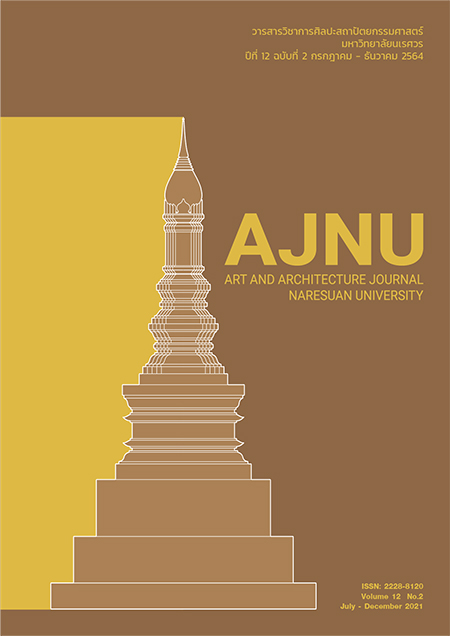Innovative design and development of the hand-woven silk fabrics of ban phon sai silk weaving group in order to upgrade OTOP Products
Main Article Content
Abstract
ABSTRACT
This is a qualitative research using a community participatory action research methodology. The research objectives were: 1) to create innovative silk fabrics that meet market needs; and 2) to design and develop machines to save effort in producing hand-woven fabrics. The sample group used in this research was Ban Phon Sai Silk Weaving Group, Samrong Sub-District, Na Chueak District, Mahasarakham Province. The group was selected by a purposive sampling method. The research instruments used for data collection were questionnaires. Statistics used in the research were mean (x̄) and standard deviation (S.D.). The research results found that innovations suitable in the development of hand-woven silk products that meet market needs include silk pattern designs inspired by unique local identity, the development of natural dyeing techniques and the development of labour-saving machinery. The researchers identified suitable local characteristics that could be applied in the development of new silk products. New designs included a unique pattern for Mahasarakham Province (the Soi Dok Mak pattern), a district pattern (based on the Thaipotamon chulabhorn crab) and local identity (based on the goby fish). Various weaving techniques were used, including a tortoise-shell weave, ikat (mudmee), and jok. Furthermore, natural dyes were developed from local raw materials, improving the softness of the fabric. This led to the production of four unique and value-added prototype silk fabrics. Market evaluation of the prototype fabrics revealed that they were at the highest level (4.80). They were then processed into five types of developed silk products. The researchers also developed a semi-automatic loom that could be used easily and conveniently. It was suitable for older people accustomed to traditional looms and those who found it difficult to learn the complex technologies associated with modern, fully-automatic looms. Results of evaluation found satisfaction with the new machinery to be at a very good level (4.80).


